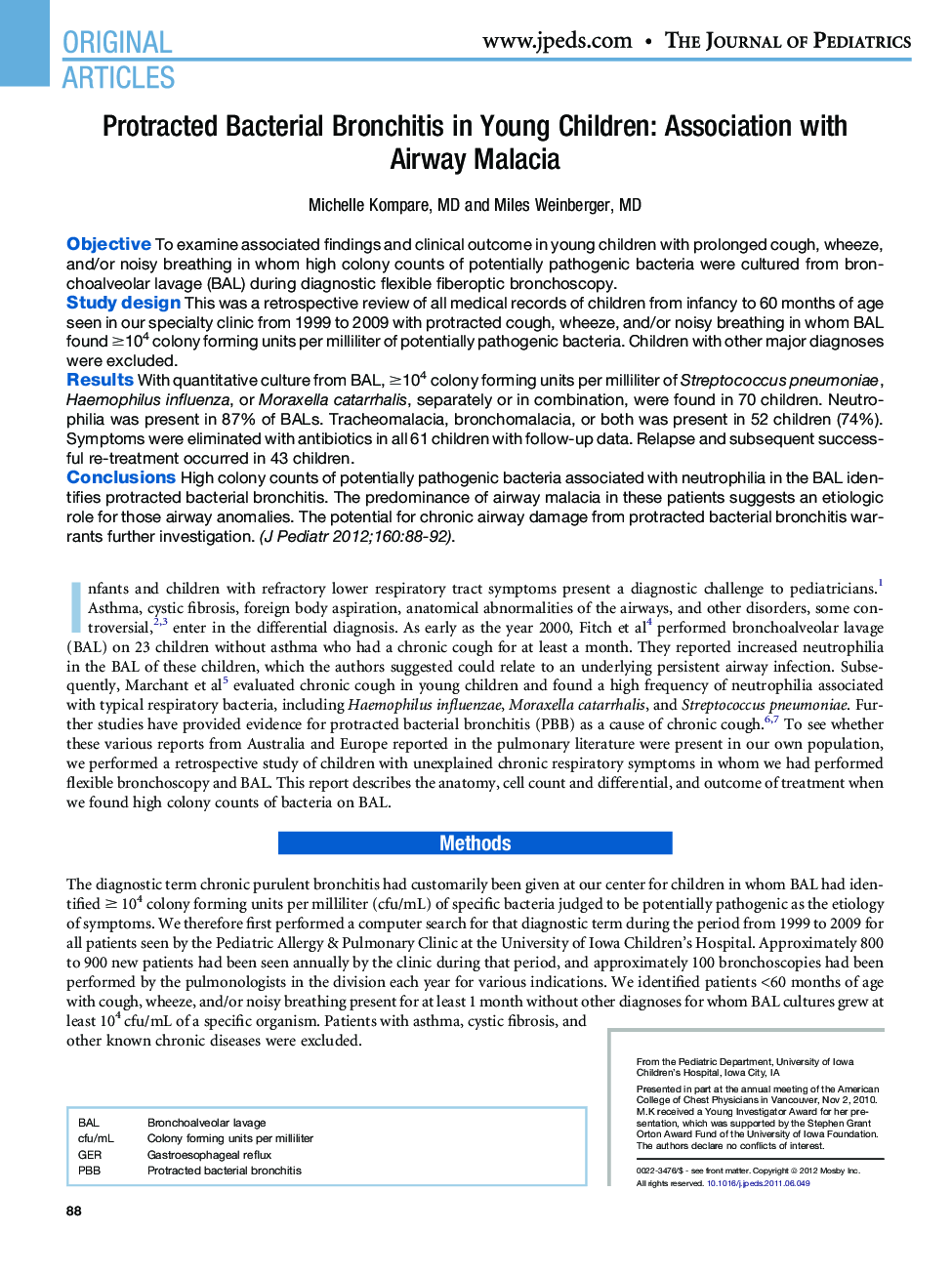| Article ID | Journal | Published Year | Pages | File Type |
|---|---|---|---|---|
| 4166072 | The Journal of Pediatrics | 2012 | 5 Pages |
ObjectiveTo examine associated findings and clinical outcome in young children with prolonged cough, wheeze, and/or noisy breathing in whom high colony counts of potentially pathogenic bacteria were cultured from bronchoalveolar lavage (BAL) during diagnostic flexible fiberoptic bronchoscopy.Study designThis was a retrospective review of all medical records of children from infancy to 60 months of age seen in our specialty clinic from 1999 to 2009 with protracted cough, wheeze, and/or noisy breathing in whom BAL found ≥104 colony forming units per milliliter of potentially pathogenic bacteria. Children with other major diagnoses were excluded.ResultsWith quantitative culture from BAL, ≥104 colony forming units per milliliter of Streptococcus pneumoniae, Haemophilus influenza, or Moraxella catarrhalis, separately or in combination, were found in 70 children. Neutrophilia was present in 87% of BALs. Tracheomalacia, bronchomalacia, or both was present in 52 children (74%). Symptoms were eliminated with antibiotics in all 61 children with follow-up data. Relapse and subsequent successful re-treatment occurred in 43 children.ConclusionsHigh colony counts of potentially pathogenic bacteria associated with neutrophilia in the BAL identifies protracted bacterial bronchitis. The predominance of airway malacia in these patients suggests an etiologic role for those airway anomalies. The potential for chronic airway damage from protracted bacterial bronchitis warrants further investigation.
